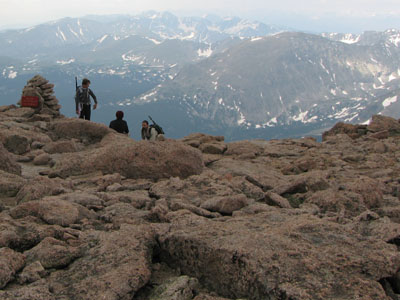| 125 | Steps to Lost Prevention | 2009-09-16 |

An article from a Denver television station:
http://www.9news.com/news/article.aspx?
storyid=123223&provider=top
It seems that a young soldier and his girlfriend went for a hike on the Goose Creek trail in the Lost Creek Wilderness of Colorado. He had previously walked the trail and I am sure he felt like it was a good place to take his date.
On the day hike the soldier supposedly ’turned the wrong way and then it got dark.’ He had not left plans with anyone as to where he was going. Over a hundred people joined in the search for the couple, who got to spend a couple of days and nights out in the woods. It snowed on them and I am sure they were miserable. The girl even said she was afraid they were going to die from the cold. I am glad they are safe and hopefully it was an opportunity for them to learn a lesson or two.
So how could they have prevented being lost? Not being there, I do not want to pass judgement on this case, but in general you should:
Use Common Sense If you lose the trail, continuing to go forward will probably not help you find it. Stop. Turn around and retrace your steps. Find your last known location. It is not hard to do, but you will have to admit that you lost the trail and need to find it. If you can’t find the trail by retracing your steps, then stop and wait on rescue - is the generally recommended procedure. Of course if you brought a map, compass, and GPS, you might have other options.
Carry a Map and Compass If you brought a map and compass (and know how to use it), then all you need to do is find yourself on the map. Examine the map before you start walking. Then, check the map regularly and determine your position by the trails features (trail intersections, creeks, ridges, etc.). By this easy common sense approach you should at least have a good idea of where you are. If you know how, you might be able to find a couple of bearings and triangulate your position.
Carry a GPS This simplifies matters, but a GPS is just an aid to navigation. Don't forget to keep track of where you are on the map also. With a GPS it is easy to find the breadcrumb trail that you left. To retrace your steps make sure that you orient your GPS to the ’heads up’ mode or orient the GPS manually by just turning the GPS so you are following the digital path.
Be Prepared Carry the ten essentials with you always (in a pack). The mighty ten don’t prevent you from getting lost, but you would be foolish not to carry them. They should have also been properly dressed.
Notify Someone Don’t be a ghost. Notify someone of your itinerary. Once again, the note doesn’t prevent you from getting lost, but it might help if you ever need assistance.
Enjoy the trails, but exercise care, caution, and common sense.
Happy trails.